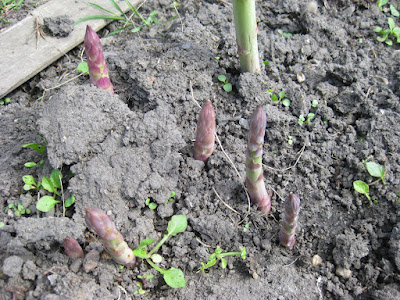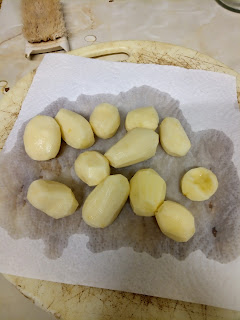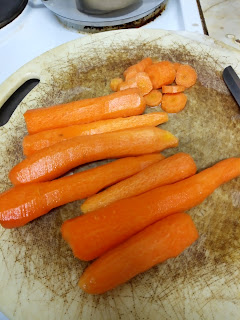I enjoy cooking but have, I suppose like many people, a fairly limited selection of dishes that I can actually cook! I find recipes in books and online often way too complicated for me, not that I can't understand them given time but that I just want to get on with throwing things into a pan, wok or dish, frying or bubbling or oven-cooking it up.
However, having gone round my usual list of Sunday dinner options, which doesn't just include the traditional English Sunday roast, I decided that I would actually try something new this week.
My eldest mentioned recently that cassoulet, which is basically like a French bean casserole with meat, is something that she bought in tins when working in France but never really tried cooking it herself. Now, I am sure that my version of it would seriously annoy any respectable French cook but I decided to give it a go.
Hence, "Cassoulet-ish" is the title for this blog!
So, one of the things that we grow a lot of in the allotment are borlotti beans for drying.
These are just some of them, it took a long time to pod all of them and when drying in the pods, they took up over four fruit boxes like you get at the greengrocers.
We have also still been eating our carrots planted last year in tyre stacks, though they are getting down to the last few small ones now.
But, even though we are at the very last of the crops planted the previous season, we do have asparagus!
These have popped up literally in the past couple of days and there's more just under the surface wich will do for tea this coming Tuesday evening.
So, my version of cassoulet, which will serve 9 portions, involved the following:
Dried Borlotti beans - soaked overnight in cold water (really important), change of water, then boiled with some dried red kidney beans (again soaked overnight) for 45 mins or so. To be honest we just pour dried beans in the pan until it looks like we have enough but I would suggest that a medium mug full of dried beans per 3 or so people is about right.
Carrots - approximately 4 large ones, though half of the selection of carrots I put in were from the allotment and in various small sizes and strange shapes! Diced
Swede - two slices, diced
Beetroot - half of one, though one could use a whole one quite easily, diced.
Mushrooms - about 500g (just over 1lb), chopped
1 red bell pepper, sliced and diced
6 lengths of asparagus from our allotment
Rosemary and other mixed dried, chopped herbs to taste. (the rosemary being a gift from another allotment holder!)
Olive or vegetable oil to brown the meat in
Half a lb (about 225g) of back bacon, trimmed of fat, diced. Bought from our local butchers, supplied by a farm 3 miles away
1 dozen medium sausages, sliced into half inch (1.25cm) slices, again from same butchers and farm. I chose some pork with sage flavouring but any decent butchers' sausage which isn't too plain or too spicy would be fine.
Once the beans were done, I drained them and then popped them to one side on a plate while I browned the sausage and bacon in the same pan (to save washing up!) and added some stock (ideally one would use a pork or bacon stock cube but I had to substitute a beef one), enough to cover all the ingredients once the vegetables and beans are added in. I always find it worth giving any meat a good brown over before moving onto the next stage.
I bubbled the meat and stock for a couple of minutes, giving it a good stir, then I added all the vegetables and beans, which luckily just fitted in the pan! And added the chopped up herbs.
I then bubbled this for about 30 minutes with the occasional stir. I then added the asparagus and boiled for another 10-15 minutes. I did read somewhere that one should always cook asparagus vertically so that the tips are steamed, not boiled. Hence the mixture looks like some kind of weird bean birthday cake with candles!
Alongside this, I popped some part-baked baguettes into the oven on 200C (392F) for 10 minutes bought from the local supermarket (there isn't a bakery that is open on a Sunday where I live and to be honest I am not sure the one we do have during the week does baguettes to buy on their own anyway)
So, here we have the finished serving of something that may or may not be Cassoulet but certainly was very tasty!























